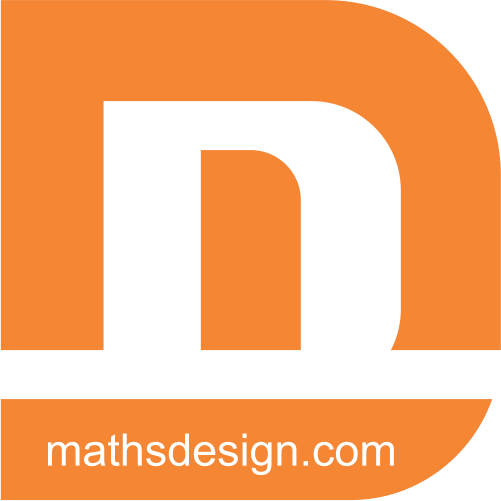Class 12 CBSE
MATH
Class 12 CBSE
Class 12 CBSE
Compartment
Class 12 CBSE
Question Paper & Marking Scheme
Class 12 CBSE
CBSE Question Bank Class XII
Sample Question Papers
Chapter wise question paper
|
1: Relations and Functions |
SET |
|
2: Inverse Trigonometric Functions |
SET 1 |
|
3: Matrices |
SET 1 |
|
4: Determinants |
SET 1 |
|
5: Continuity and Differentiability |
SET 1 |
|
6: Applications of Derivatives |
SET 1 |
|
7: Integrals |
SET 1 |
|
8: Application of Integrals |
SET 1 |
|
9: Differential Equations |
SET 1 |
|
10: Vector Algebra |
SET 1 |
|
11: Three Dimensional Geometry |
SET 1 |
|
12: Linear Programming |
SET 1 |
|
13: Probability |
SET 1 |
Class 12 Maths Chapters
1: Relations and Functions
- 1.1 Introduction
- 1.2 Types of Relations
- 1.3 Types of Functions
- 1.4 Composition of Functions and Invertible Function
- 1.5 Binary Operations
2: Inverse Trigonometric Functions
- 2.1 Introduction and Basic Concepts or Inverse Trigonometric Functions
- 2.3 Properties of Inverse Trigonometric Functions
3: Matrices
- 3.1 Introduction
- 3.2 Matrix
- 3.3 Types of Matrices
- 3.4 Operation on Matrices
- 3.5 Transpose of a Matrix
- 3.6 Symmetric and Skew Symmetric Matrices
- 3.7 Elementary Operation (Transformation) of a Matrix
- 3.8 Invertible Matrices
4: Determinants
- 4.1 Introduction
- 4.2 Determinant
- 4.3 Properties of Determinants
- 4.4 Area of a Triangle
- 4.5 Minors and Cofactors
- 4.6 Adjoint and Inverse of a Matrix
- 4.7 Applications of Determinants and Matrices
5: Continuity and Differentiability
- 5.1 Introduction to Continuity and Differentiability
- 5.2 Exponential and Logarithmic Functions
- 5.3 Logarithmic Differentiation
- 5.4 Derivatives of Functions in Parametric Forms
- 5.5 Second Order Derivative
- 5.6 Mean Value Theorem
6: Applications of Derivatives
- 6.1 Introduction
- 6.2 Rate of Change of Quantities
- 6.3 Increasing and Decreasing Functions
- 6.4 Tangents and Normals
- 6.5 Approximations
- 6.6 Maxima and Minima
7: Integrals
- 7.1 Introduction to Integral Calculus
- 7.2 Integration as an Inverse Process of Differentiation
- 7.3 Methods of Integration
- 7.4 Integrals of Some Particular Functions
- 7.5 Integration by Partial Fractions
- 7.6 Integration by Parts
- 7.7 Definite Integral
- 7.8 Fundamental Theorem of Calculus
- 7.9 Evolution of Definite Integrals by Substitution
- 7.10 Some Properties of Definite Integrals
8: Application of Integrals
- 8.1 Introduction
- 8.2 Area under Simple Curves
- 8.3 Area Between Two Curves
9: Differential Equations
- 9.1 Introduction to Differential Equations
- 9.2 Basic Concepts
- 9.3 General and Particular Solutions of a Differential Equation
- 9.4 Formation of a Differential Equation whose General Solution is given
- 9.5 Methods of Solving First Order, First Degree Differential Equations
10: Vector Algebra
- 10.1 Introduction to Vectors
- 10.2 Some Basic Concepts
- 10.3 Types of Vectors
- 10.4 Addition of Vectors
- 10.5 Multiplication of a Vector by a Scalar
- 10.6 Product of Two Vectors
11: Three Dimensional Geometry
- 11.1 Introduction
- 11.2 Direction Cosines and Direction Ratios of a Line
- 11.3 Equation of a Line in Space
- 11.4 Angle between Two Lines
- 11.5 Short Distance between Two Lines
- 11.6 Plane
- 11.7 Coplanarity of Two Lines
- 11.8 Angle between Two Planes
- 11.9 Distance of a Point from a Plane
- 11.10 Angle between a Line and a Plane
12: Linear Programming
- 12.1 Introduction to Linear Programming
- 12.2 Linear Programming Problem and its Mathematical Formulation
- 12.3 Different Types of Linear Programming Problems
13: Probability
- 13.1 Probability Introduction
- 13.2 Conditional Probability
- 13.3 Multiplication Theorem on Probability
- 13.4 Independent Events
- 13.5 Bayes’ Theorem
- 13.6 Random Variables and its Probability Distributions
- 13.7 Bernoulli Trials and Binomial Distribution
The class 12 CBSE syllabus is designed to help students develop a better understanding of the various topics and concepts covered in the course. It includes topics such as English, Mathematics, Science, Social Science, Computer Science, Information Technology, Economics, Business Studies, Physical Education, Fine Arts, Psychology, and more. Students should also be prepared for practical examinations, internal assessments, and viva–voce.

Recent Comments